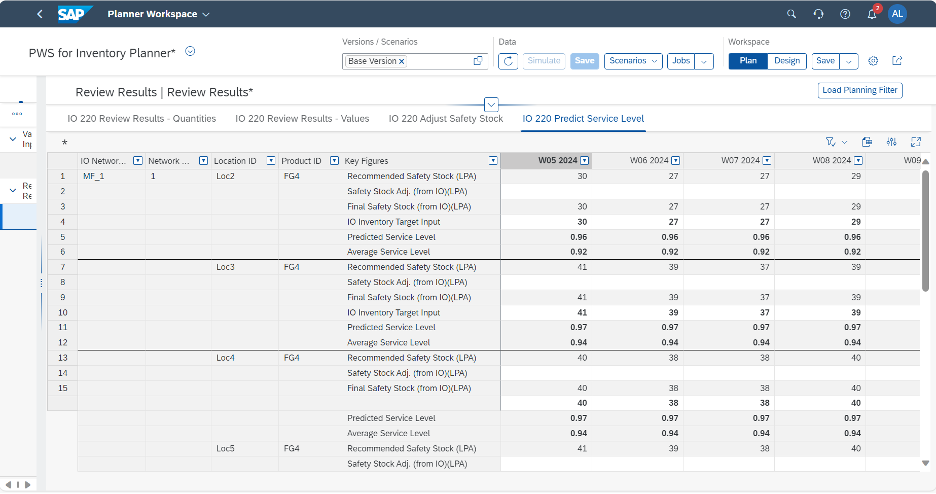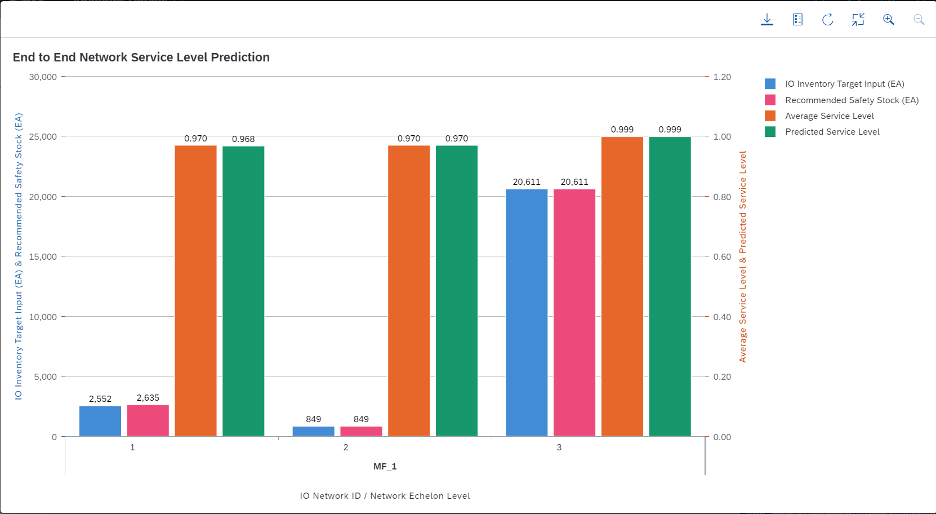Share this article
Follow us on Linkedin
How many times did you change an inventory target plan, but did not know the impact to your customers’ service levels?
In every supply chain planning cycle, a planner often confronts scenarios where recommended or optimal inventory targets cannot be adopted, resulting in overriding inventory targets. Reasons for such scenarios vary:
- Unexpected external or internal disruptions of supply.
- Manufacturing shut-downs, maintenance schedules, local Holidays.
- Financial requirements to manage cash locked into inventory.
Due to such scenarios and perhaps others not accounted here, a planner must decide for inventory targets lower or higher than recommended or optimal. Most cases of inventory target override involve adopting lower inventory levels, which compromise the service level expected to achieve with customers. Often, the planner makes the override decision without understanding the service level impact. But more broadly, businesses make inventory decisions without understanding how their customer service levels will fare.
Fortunately, businesses no longer must drive blindly on the impact to customer service level when moving away from planning to optimal inventory targets.
SAP recently released a function that help businesses predicting service levels at any node of a supply chain network, including customer service levels. Humbly, one of my last product feature/function children before departing SAP product engineering team.
Let’s roll up our sleeves and join me in reviewing the details.
SAP Integrated Business Planning for inventory (“SAP IBP for inventory”) generates time-series inventory plans based on an optimization function. Any optimization function contains hard constraints. In this case, SAP IBP for inventory optimization function has the customer service level as a hard constraint input. That is, the time-series inventory plans generated respond to customer service level inputs (key figure “Target Service Level”). In essence, a planner knows the expected customer service level to be achieved with the generated inventory plan.
So what?
Well, as introduced here and vetted with multiple SAP IBP for inventory customers, planners often face the choice to override SAP IBP for inventory optimal inventory targets.
When faced with such choice now, a planner can use the newly introduced function “Service Level Prediction” to model different time-varying inputs for inventory targets and predict time-varying service levels.
How does the Service Level Prediction function work?
The function can be used as a stand-alone function with an input key figure named Inventory Target and an output key figure named Predicted Service Level. For the most recent release, the input key figure Inventory Target can only be used for overriding safety stock values. Needles to say, the function requires the same master data model inputs as required by the multi-stage inventory optimization function.
- Input Key Figure IO Inventory Target Input: Target quantity of safety stock at a location product that is used to override recommended safety stock and predict service level.
- Output Key Figure Predicted Service Level: Service level that is predicted at a location product after the quantity of recommended safety stock is adjusted using the Inventory Target input key figure.
However, a recommended best practice is to include the Service Level Prediction function as a post-process step in the inventory optimization planning process. That is, use the function leveraging the planned outputs of the safety stock inventory optimization run.
SAP IBP Planner Worspace for Inventory Planner – Predict Service Level.

Why?
Before determining the override safety stock quantity, a planner can use the multi-stage recommended results to model inputs and benchmark outputs of the Service Level Prediction function:
- Use Multi-Stage Inventory Optimization Output Key Figure Recommended Safety Stock to define reasonable inputs for input key figure IO Inventory Target Input.
- Benchmark Multi-Stage Inventory Optimization Output Key Figure Average Service Level against output key figure Predicted Service Level.
SAP IBP Analytics Bar Chart by IO Network ID and Network Echelon Level: Recommended Safety Stock vs. IO Inventory Target Input, Average Service Level vs. Predicted Service Level.

So, moving away from optimal safety stock recommendations can be supported with a predicted understanding of the impact to service level across a supply chain network, including locations’ service levels to customers. The comprehensive analysis can be granular at every node of the supply chain and aggregated at the safety stock budget level.
Do you want to learn more? Let’s talk.
